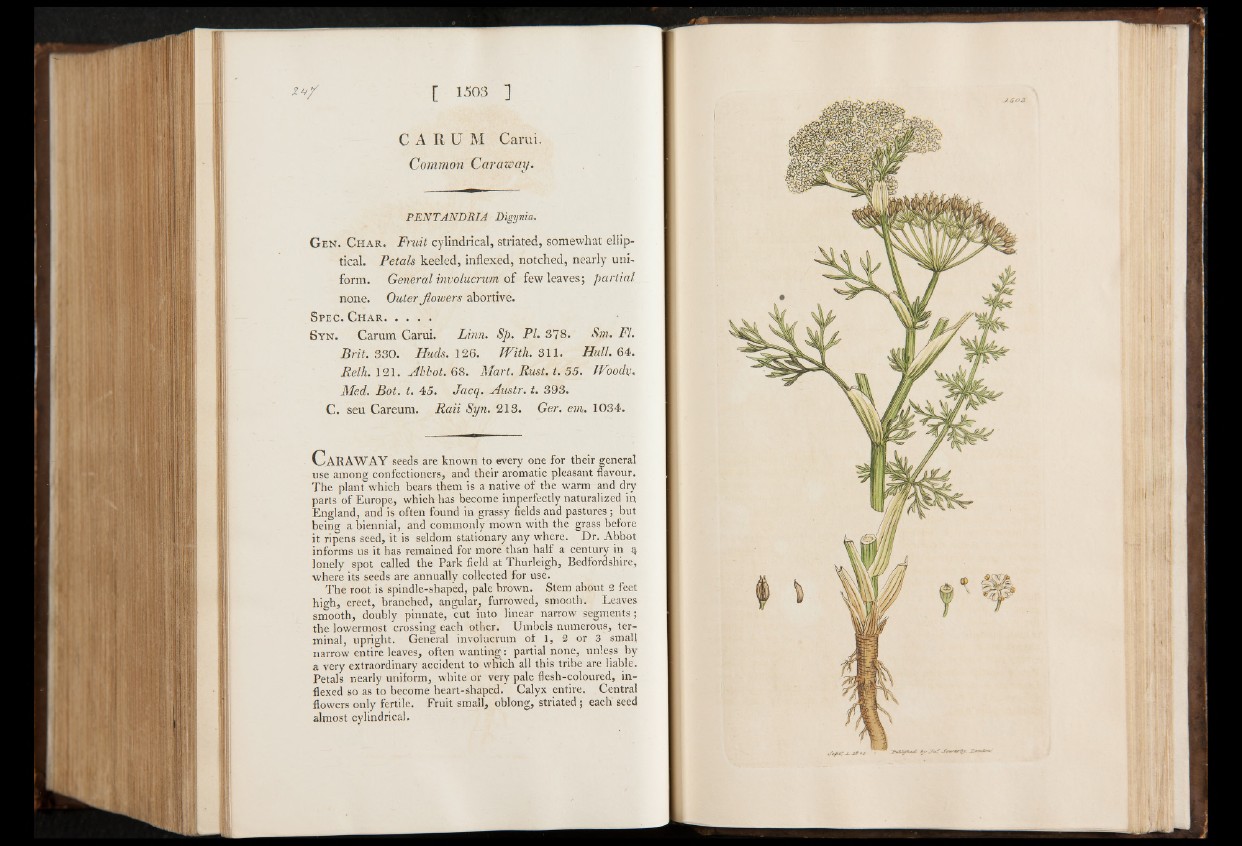
C A R U M Carui.
Common Caraway.
PENTANDRIA Digynia.
G en. Char. Fruit cylindrical, striated, somewhat elliptical.
Petals keeled, indexed, notched, nearly uniform.
General involucrum of few leaves; partial
none. Outer flowers abortive.
Spec. Char..............
Svn. Carum Carui. Linn. Sp. PI. 3 7 8 . Sim. FI.
B rit. 330. Huds. 126. With. 3 1 1 . Hull. 64.
Relh. 121. Abbot. 68. Mart. Rust. t. 55. Woodv.
Med. B ot. t. 4 5 . Jacq. Austr. t. 3 9 3 .
C. seu Careum. R a il Syn. 2 1 3 . Ger. em. 1034.
C a r a w a y seeds are known to every one for their general
use among confectioners, and their aromatic pleasant flavour.
The plant which bears them is a native of the warm and dry
parts of Europe, which has become imperfectly naturalized in
England, and is often found in grassy fields and pastures; but
being a biennial, and commonly mown with the grass before
it ripens seed, it is seldom stationary any where. Dr. Abbot
informs us it has remained for more than half a century in $
lonely spot called the Park field at Thurleigh, Bedfordshire,
where its seeds are annually collected for use.
The root is spindle-shaped, pale brown. Stem about 2 feet
high, erect, branched, angular, furrowed, smooth. Leaves
smooth, doubly pinnate, cut into linear narrow segments;
the lowermost crossing each other. Umbels numerous, terminal,
upright. General involucrum of 1, 2 or 3 small
narrow entire leaves, often wanting : partial none, unless by
a very extraordinary accident to which all this tribe are liable.
Petals nearly uniform, white or very pale flesh-coloured, in-
flexed so as to become heart-shaped. Calyx entire. Central
flowers only fertile. Fruit small, oblong, striated j each seed
almost cylindrical.